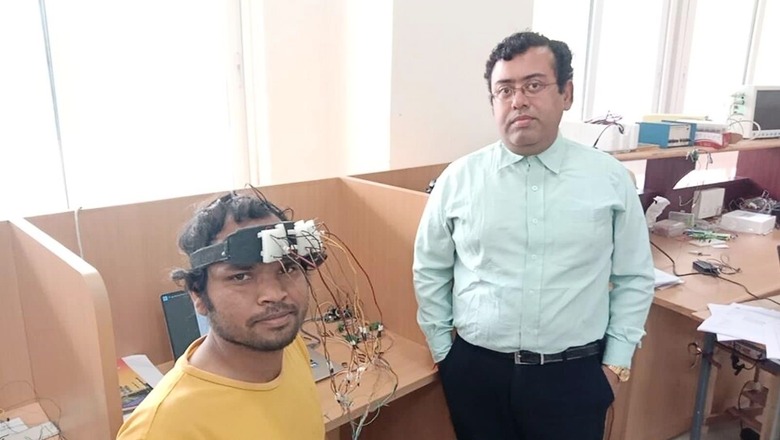
views
The Indian Institute of Technology (IIT) Mandi researchers in collaboration with PGIMER Chandigarh have developed a simple, portable and cost-effective device to detect and diagnose ischemic stroke, which caused by impaired blood flow to the brain. “Ischemic stroke caused by the insufficient or interrupted blood supply to part of the brain affects one of every 500 Indians every year. Surveys have shown that around 10 to 15 per cent of all strokes affect people below 40 years of age,” says the IIT.
The efficient management and treatment of stroke depend upon early identification and diagnosis, the institute says adding that currently, magnetic resonance imaging (MRI) and computer tomography (CT) techniques are considered the gold standard for ischemic stroke detection. “While these are indeed reliable methods, they require considerable infrastructure and high cost, and are inaccessible to many communities in India – there is only one MRI service for every 1 million people in the country,” says IIT Mandi.
Also read| From Product Design to Embedded Systems, IIT Mandi Launches Free Courses, Anyone Can Apply
The IIT Mandi team claims to have performed studies that measures the bio-markers under ischemic conditions at the forearm and at the frontal lobe of the brain. The researchers validated their detector prototype through experimental occlusion of the forearm and evoked ischemic stroke at the frontal lobe, and found excellent diagnostic potential.
A research paper describing the device and its operation was recently published in IEEE Sensors Journal. The paper was co-authored by Dr Shubhajit Roy Chowdhury, Associate Professor, School of Computing and Electrical Engineering, IIT Mandi, and his student Dalchand Ahirwar along with Dr Dheeraj Khurana, Post Graduate Institute for Medical Education and Research, Chandigarh.
Read| IIT Patna BTech Placement Witnesses 74% Rise in PPOs, Highest Salary Package at Rs 82.05 Lakhs
While explaining the research, Dr Shubhajit Roy Chowdhury, Associate Professor, IIT Mandi, said, “We are working towards finding a low-cost diagnostic technique to precisely detect ischemic stroke at the point of care so that such tests can be used in rural, poor and remote areas. Our team has designed and developed a small wearable device that makes use of Near Infrared Spectroscopy to detect ischemic stroke. In this device, a near-infrared light emitting diode (NIRS LED) emits light in the range of 650 nm to 950 nm. This light interacts with the coloured components of the blood like hemoglobin and provides information on blood characteristics such as regional oxygen saturation, regional oxygen consumption, and regional blood volume index.”
Speaking about the research, Dalchand Ahirwar, research scholar, IIT Mandi, said, “A combined matrix of this information reflects the temporal dynamics of blood haemoglobin, which can help in identifying impaired or abnormal blood flow conditions at a local tissue. The biomarkers that we have used to study ischemic conditions are oxygen saturation, regional oxygen consumption and regional blood volume index that could better predict ischemic conditions than other techniques.”
Read all the Latest Education News and Breaking News here




















Comments
0 comment